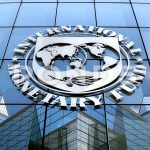Net inflows of foreign direct investment (FDI) into Pakistan averaged about $2.3 billion in the last four years and in the eleven months of the outgoing 2020-21, it slipped below $1.8bn. Even at the $2.3bn level, our yearly FDI inflow is less than half of our monthly merchandise import bill.
Clearly, much thicker inflows of FDI are required to help ease the balance of payments problems.
But the problem is, Pakistan makes little effort to attract more FDI and relies on foreign funding from friendly nations or commercial borrowing from foreign banks in addition to seeking International Monetary Fund (IMF) loans.
Commercial borrowing in foreign currency is often very expensive and keeps inflating our external debt servicing; foreign funding by friendly nations generally come at a heavy cost to our sovereign interests and IMF loan conditions disrupt economic growth cycles in the name of stabilisation.
Why not then focus on true non-debt creating sources of forex inflows ie exports, remittances and foreign investment? The PTI government and the State Bank of Pakistan have jointly made good efforts to boost home remittances. But no significant growth in export earning is in sight. Even worse is the situation of FDI. The fact that average yearly FDI inflows remained below $2.3bn in the last four years shows how low-prioritised FDI remains in Pakistan.
This must change now. Imports are growing too fast and external debt servicing keeps devouring foreign exchange. Against that, total forex earnings from remittances and exports fall short — or for some brief periods — equal our total merchandise imports bill. This compels Pakistan to continue to borrow from the aforementioned three sources — or at some point of time two of the three — again inflating future volumes of external debt servicing. Unless export earnings and FDI inflows grow rapidly, our balance of payments problems will aggravate in the next fiscal year starting from July — even if remittances continue to grow at the current rate.
In 2020, FDI inflows into such countries like India, Brazil, UAE, Indonesia and Vietnam remained so voluminous that a comparison with Pakistan seems too daring. In 2020, Pakistan attracted a little below $2.6bn FDI. Against that, FDI inflows into these five countries stood at $64bn, $25bn, $20bn, $19bn and $16bn respectively. Now, the question is if Indonesia and Vietnam can attract $19bn and $16bn in FDI why Pakistan contends with $2.6bn? Why can’t the country aspire for $5bn-$6bn annual FDI in the beginning and then keep aiming for more?
To answer this question, one has to look at what Indonesia and Vietnam have lately been doing to attract FDI. As far as the economic policy measures are concerned, Pakistan doesn’t lag far behind them in supporting foreign investment-led activity in the domestic economy. Pakistan’s law and order situation today is also better than what it was a decade ago.
But the problem is Pakistan is still perceived as a country not open to modern corporate cultural values. Besides, not many of our domestic industries have become an integral part of regional and global value chains of high-end manufacturing and services. This discourages faster growth of FDI inflows into the country. And, this must be fixed.
While total FDI inflows in Pakistan remain low, sectoral distribution remains diversified.
The country can easily capitalise on sectoral diversification of FDI recipients if FDI-attracting policies can be kept free from undue political considerations and their implementation is made meticulous. In 2020, thermal, hydel and coal power generation, financial services, telecommunications and information technology, oil and gas exploration, electric and electronics sector, trade and transportation and construction sector were all among recipients of FDI inflows. In addition to them, food and beverages, textiles and pharmaceutical sectors also got FDIs.
The pharmaceutical sector is the latest candidate of FDI due to the heightened role it has been playing in Pakistan since the outbreak of the Covid-19 pandemic in the country in February 2020.
The State Bank of Pakistan, in its second quarterly report for 2020-21, has pointed out that Pakistan has so far derived most of the FDI from China, mainly under China-Pakistan Economic Corridor (CPEC) phase I projects. “In the second phase of CPEC, investment focus is supposed to shift towards industrial development, agriculture mechanisation, tourism and social development. However, these sectors are yet to see any significant foreign investment flows.”
In the eleven months of 2020-21, FDI inflows from China accounted for 41.6 per cent of Pakistan’s total FDI receipts. And if inflows from Hong Kong, an autonomous special administrative region of the mainland, are included the percentages goes up to 51.5pc.
Whereas sectoral diversification in FDI receipts is always welcome, a country aiming at increasing its FDI inflows must also strive for attracting it from as many origins as possible. That we don’t see in the case of Pakistan. Apart from China and Hong Kong, Pakistan’s FDI inflows in eleven months of 2020-21 came mostly from the US, UK, and Netherlands. FDI from all other countries remained low. This must change. And this cannot change unless not only our FDI-attracting policies become equally attractive for all countries, but Pakistan’s political relationships with other countries also improve noticeably.
Is that possible? This is an important question. Two equally important questions are: at what cost Pakistan can improve its political relationship with most nations and is the country willing and able to pay that cost.
The fast-evolving post-US withdrawal scenario in Afghanistan and ongoing track two diplomacy with India and deeper engagement with all stakeholders of the Middle East crisis are three important things that will have a far-reaching impact on our hard-earned peace in the country. Do we need to remind ourselves that only a peaceful Pakistan can attract more foreign investment?





